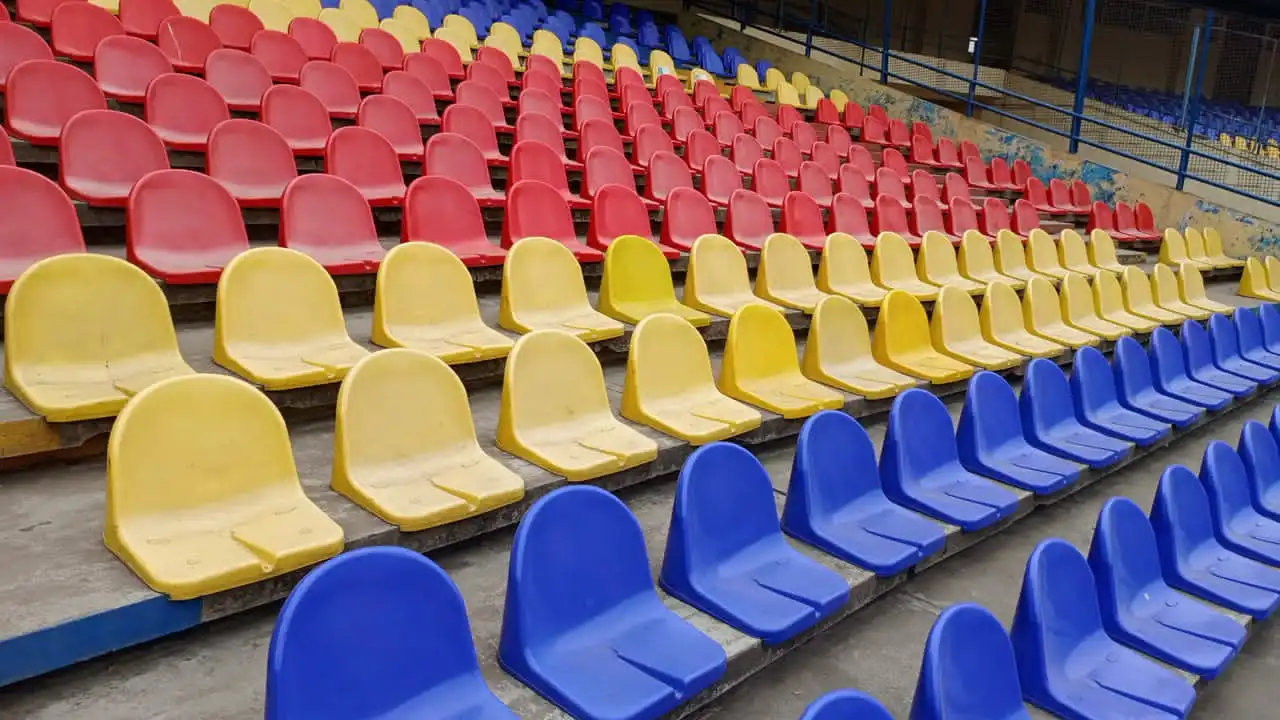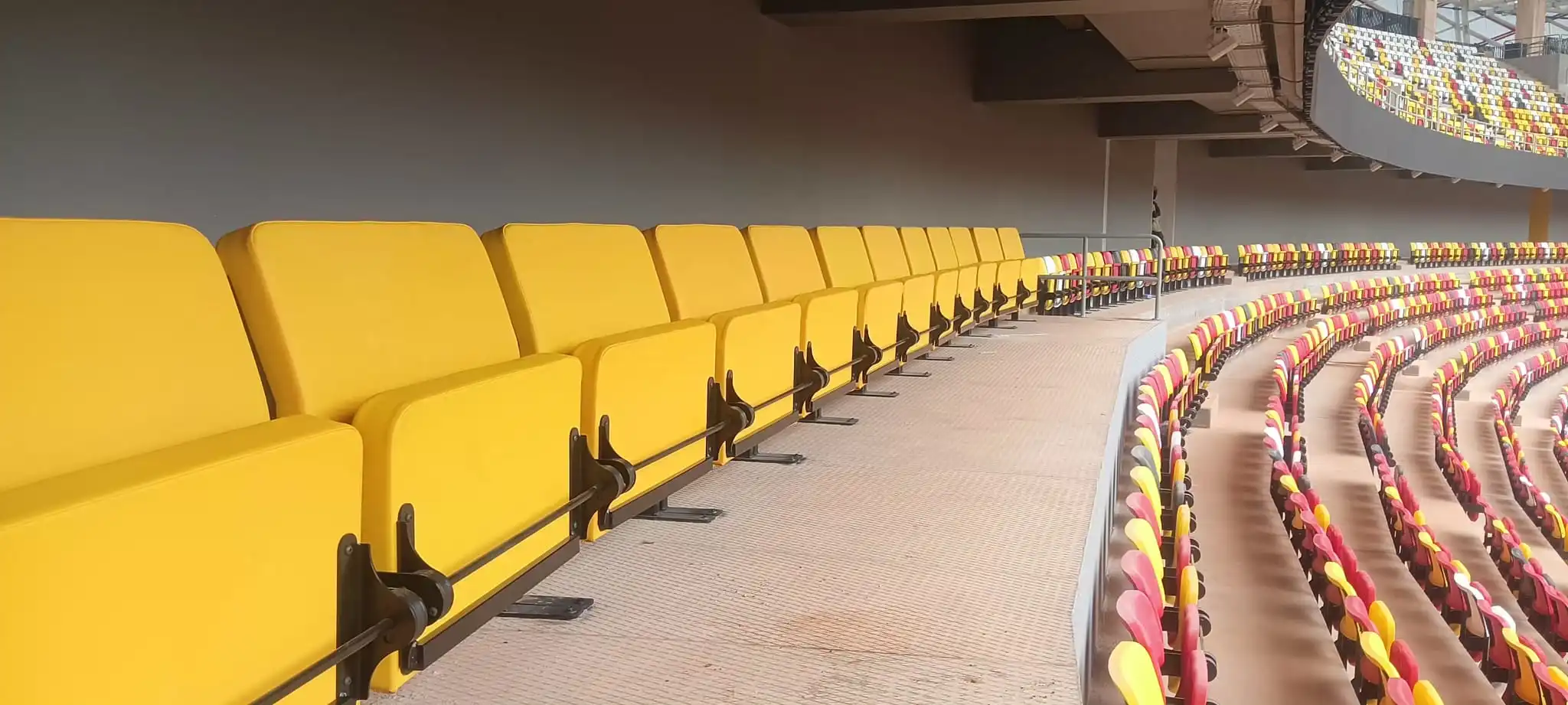Future Trends in Stadium Seating Across Europe: Innovation, Sustainability, and Fan Experience
Europe is home to some of the most iconic stadiums in the world, from Wembley Stadium in London to Allianz Arena in Munich and Camp Nou in Barcelona. As the continent prepares for upcoming mega-events such as UEFA Euro 2028, the demand for modern, sustainable, and innovative stadium seating solutions is stronger than ever. The next decade will redefine how fans experience live sports, and stadium seating will be at the center of this transformation.

The Changing Landscape of European Stadiums
In recent years, European clubs and municipalities have invested heavily in stadium modernization projects. This shift is driven by:
Growing fan expectations for comfort and technology.
Sustainability targets outlined in EU policies.
Multi-sport functionality, with stadiums hosting football, rugby, concerts, and cultural events.
Digital transformation within sports and entertainment venues.
These factors are reshaping the requirements for seating manufacturers and suppliers across Europe.
Key Trends Defining Stadium Seating in Europe
1. Sustainability as a Core Requirement
European stadium projects are increasingly aligned with the EU Green Deal. Seating solutions must therefore prioritize:
Recyclable plastics and metals.
Low-carbon production methods.
Long product lifespan to reduce waste.
Refurbishment options instead of full replacement.
Sustainable seating is not just an environmental choice but also a financial strategy for long-term savings.
2. Smart Seating Technology
The integration of digital features into seating design is gaining traction:
In-seat charging points for mobile devices.
Connectivity for data collection and smart ticketing.
Fan engagement features such as cup holders, sensors, and comfort adjustments.
This innovation enhances the fan experience while offering stadium operators new revenue opportunities.
3. Modular and Flexible Configurations
Europe’s multi-purpose arenas require modular seating systems that allow:
Quick reconfiguration between sports and concerts.
Variable capacity adjustments for different events.
Efficient installation and removal processes.
This flexibility maximizes stadium utilization and profitability.
4. Premium and VIP Hospitality Areas
The demand for luxury seating zones is growing rapidly. Fans are increasingly looking for experiences beyond the game, including:
VIP lounges with leather seating.
Wider, more comfortable premium seats.
Hospitality services integrated directly with seating.
These areas generate high returns on investment for stadium operators.
Case Studies: European Stadium Modernization
Tottenham Hotspur Stadium (UK): Designed as a multi-purpose venue, its innovative seating solutions allow rapid transitions between football and NFL games.
Allianz Arena (Germany): Known for its aesthetic design, the arena has invested in ergonomic and durable seating to maintain comfort during long matches.
Stade de France (France): Continuous upgrades to seating capacity and comfort highlight the importance of modernization for hosting mega-events like the Rugby World Cup and Olympics.
These examples showcase how European venues are adopting future-oriented seating strategies.
The Business Case for Modern Seating
Investing in advanced seating is not just about fan comfort. It also ensures:
Revenue growth through higher ticket sales and VIP experiences.
Compliance with UEFA and FIFA regulations.
Enhanced sustainability credentials that align with global expectations.
Future-proofing against changing market demands.
Looking Ahead: Stadium Seating in the 2030s
By the 2030s, stadium seating in Europe will likely feature:
Fully sustainable production cycles.
AI-powered smart seating for real-time fan feedback.
Augmented reality integrations for immersive viewing experiences.
Greater inclusivity, ensuring accessibility for all spectators.

Conclusion
As Europe prepares for major tournaments and a new era of fan engagement, stadium seating is evolving into a cornerstone of sports infrastructure. From sustainability and smart technologies to modular flexibility and premium experiences, the future of seating in European stadiums will reflect both innovation and responsibility.
For clubs, municipalities, and investors, the message is clear: the next generation of seating will define not only the look of Europe’s stadiums but also the way millions of fans experience sport.


